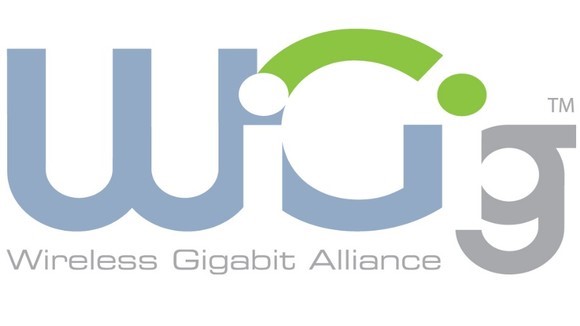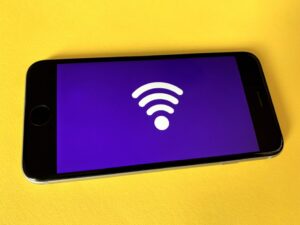Just when we got used to all the pros and cons of WiFi, a new contender we don’t know much about yet, appears on the horizon. Let’s look at the strengths and weaknesses of WiGig.
WiGig is another wireless standard just like WiFi, but in spite of this there are some significant differences.
WiGig’s range is considerably closer than WiFi, won’t easily reach past 10 metres and doesn’t particularly like to go through walls. So why would you want to use it?

Image credit: WiGig Alliance
WiGig is fast, faster than the Wifi we’re used to. It operates on a much higher frequency (60GHz ) than traditional bandwidths and mobile signals and can deliver speeds of up to 7Gbps. lewer. However, as soon as your devices are further away, speed performance decreases rapidly.
Experts therefore recommend that WiGig be used for home entertainment systems, tablets and home pcs and in addition to your existing WiFi connection.
If energy saving is important to you, you can consider WiGig with a clear conscience as it’s been designed as a low energy alternative. It also claims to use five times less energy than WiFi and radio signals are set up to avoid congestion and send signals directly to it’s goal.
WiGig was established by the Wireless Gigabit Alliance, which included members like Broadcom, Cisco, Intel, Microsoft, Dell, Nokia, Toshiba, Qualcomm, NEC, Panasonic and other large corporations. At the moment the WiGig standard is currently going through various certification programmes, but according to estimations these will be completed by the end of 2013.
[BRONNE: www.techradar.com & www.computerweekly.com]
Net toe ons gewoond geraak het aan WiFi en vrede gemaak het met sy nukke en grille, verskyn daar `n nuwe speler op die veld. Een waarvan ons tot nou toe nie veel van geweet het nie. Kom ons kyk wat is WiGig en vergelyk sy sterk- en swakpunte.
WiGig is bloot nog `n draadlose (wireless) standaard soos WiFi, daar is tog `n paar duidelike verskille.
WiGig se reikwydte is aansienlik korter as WiFi, strek nie maklik verder as 10 meter nie en sukkel om deur mure `n sein te stuur. So, hoekom sal `n mens dit wil gebruik?

Image credit: WiGig Alliance
WiGig is vinnig, vinniger as die Wifi waaraan ons gewoond is. Dit werk op ‘n veel hoër frekwensie (60GHz ) as die tradisionele bandwydtes en mobiele seine soos 3G kan blykbaar tot 7 Gbps lewer. Sodra jou toestelle egter verder weg is, verminder die spoed bitter vining.
Kenners beveel dus aan dat WiGig gebruik moet word vir tuisvermaak-toestelle, tablette en tuisrekenaars en dat jy dit gebruik as aanvulling tot jou reeds bestaande WiFi-konneksie.
As die besparing van energie vir jou belangrik is, kan jy WiGig met `n skoon gewete oorweeg aangesien dit ontwerp is as `n lae energie alternatief en aanspraak daarop maak dat dit vyf keer minder energie verbruik as WiFi. Radioseine word geoptimiseer om die beste resultate te gee, oorlading te verminder en die sein direk te stuur waarheen dit moet gaan.
WiGig het ontstaan by die Wireless Gigabit Alliance wat lede soos Broadcom, Cisco, Intel, Microsoft, Dell, Nokia, Toshiba, Qualcomm, NEC, Panasonic en ander groot maatskappye insluit. Op die oomblik gaan dié standaard eers deur verskeie sertifiseringsprogramme, maar volgens beraming sal dit teen einde 2013 afgehandel wees.
[BRONNE: www.techradar.com & www.computerweekly.com]




